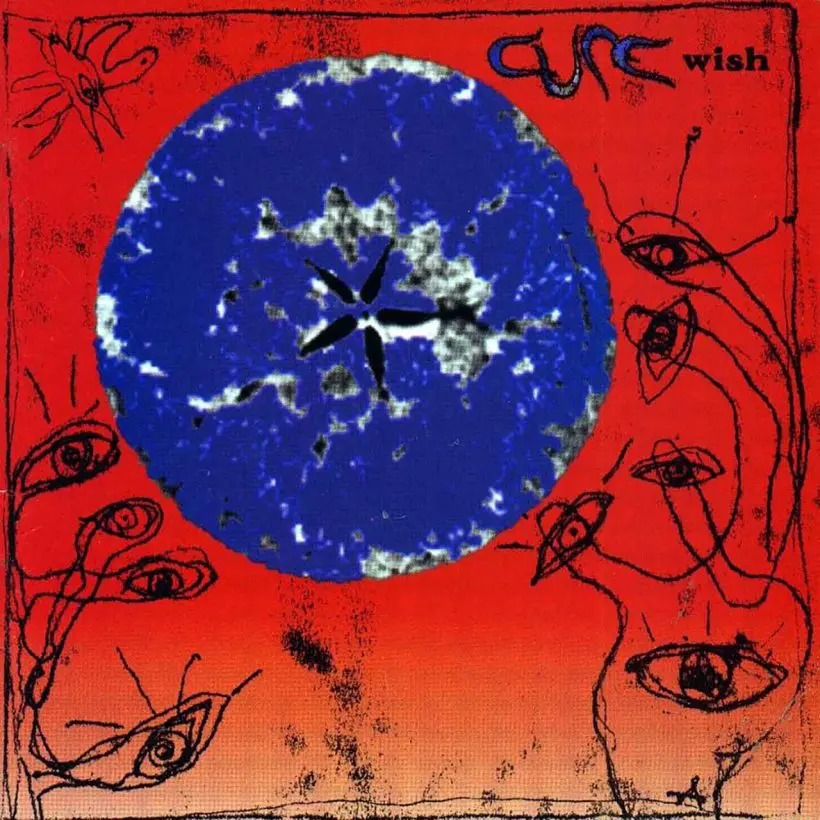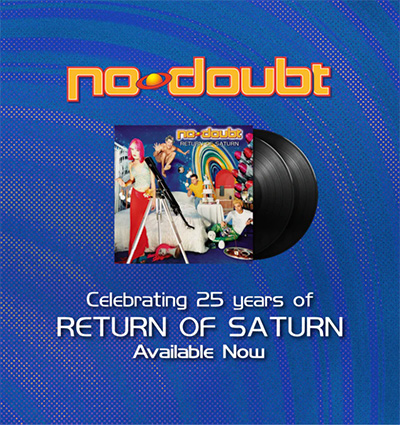‘Wish’: How The Cure’s Dreams Of A No. 1 Album Came True
After the brilliant but draining ‘Disintegration,’ The Cure seized upon a new-found positivity for their next album.

In retrospect, it’s fair to suggest the late 1980s were the best and the worst of times for The Cure. On the upside, their multi-platinum album, Disintegration (hailed as “a mind-blowing and stunningly complete album” by NME) made them into one of the biggest alt-rock acts in the world, but success came at a price – the ensuing world tour exhausted all concerned and led frontman Robert Smith to seriously consider splitting the band.
Bearing all that in mind, it came as an extremely pleasant shock for their fans when The Cure returned sounding refreshed on their next album, April 1992’s Wish. Not only that, but even the famously pessimistic Robert Smith sounded uncharacteristically upbeat by the state of play.
Listen to The Cure’s Wish now.
“When we did Disintegration, there was an entirely different atmosphere to the one we had doing this new stuff,” Smith told UK weekly Melody Maker at the time of Wish’s release. “Disintegration was really pretty savage compared to this. I feel immeasurably more comfortable about it all now than I did three years ago. There’s much less pressure.”
So what changed for Smith and company in the interim? Firstly, the singer-guitarist had married his long-time girlfriend, Mary Poole, and settled into domestic stability, and secondly, his creative juices were fired up by compiling 1990’s Mixed Up – an unlikely yet artistically successful collection of remixes of songs from The Cure’s catalog. “Never Enough,” the freshly-penned, guitar-heavy single they recorded to launch it, convinced Smith that his band had a future.
The preparations
Unlike the preparation for Disintegration, wherein Smith had withdrawn from his bandmates and adopted a “monk-like” approach to writing in isolation, the songs for Wish were written with a greater sense of involvement. Smith had accrued a box full of new ideas, but initial demo sessions in rural English locations in Cornwall and at Farmyard Studios in the Cotswolds yielded a mountain of promising material.
Telling Melody Maker that The Cure “got around 40 songs down during those two sessions,” Smith went on to reveal that his original concept was to release two separate albums – “a moody one and a poppy one” to follow Disintegration.
“The first [“Higher”] would be driven by guitars and be aggressive,” he said. “The second [“Music For Dreams”] was slow, atmospheric, and purely instrumental. The band was contributing so much more to the tracks, I’ve actually sat back and let them play, which is a really exciting feeling.”
As work progressed, however, the focus shifted from creating two separate albums to a single entity of double-album length. Having written an epic, seven-minute song, provisionally titled “Swell” (later to become “End”), Robert Smith initially chose “Swell” as the album title, but as the new songs were honed further, “Swell” became Wish as The Cure – and co-producer Dave Allen – decamped to Richard Branson’s studio, The Manor, in rural Oxfordshire, where the official album sessions began during the fall of 1991.
The recording of The Cure’s Wish
While in residence, the band enjoyed the opportunity to debunk their supposedly morose image by taking advantage of The Manor’s leisure activities, such as its go-kart track and full-sized snooker table. They even purchased bicycles and took a daily ride down the canal path to the local pub.
Noting that “the fun thing is something people always miss out on with us,” Smith later shared the hilarity of these bike rides with Melody Maker.
“Most early evenings, we’d cycle down to the pub for a drink or two,” he revealed. “I was the only one uncool enough to have a bike with lights, so I was always at the back on the way there and always at the front on the way back. I still can’t believe we never ended up in the water!”
This same sense of fun pervaded Wish’s final tracklist. Sequenced early on, the likes of “Open,” “From The Edge Of The Deep Green Sea,” and the achingly sad “Apart” (“How did we get so far apart/We used to be so close together”) displayed plenty of The Cure’s trademark angst, but that was just as quickly leavened by the likes of “Wendy Time” and “Higher”: tracks which proudly exuded a new-found lightness of touch, not to mention unashamedly poppy melodies.
Friday I’m In Love
Wallowing in this new-found euphoria, the supposedly gloomy gothic rock maestros even exhorted us to “get happy!” on the infectious “Doing The Unstuck” before hitting a new peak with “Friday I’m In Love” – a truly sublime pop song which is still right up there with The Cure’s greatest achievements.
“Originally, [“Friday I’m In Love”] was at half speed and very downbeat,” Robert Smith told The Washington Post in a 1992 interview. “But then, [bassist] Simon Gallup caught a groove and started playing it faster and faster until we hit a tempo that felt comfortable – and suddenly I realized it was a pop song.”
At this point, Smith was still without a lyric for his future classic, but he was goaded into action when his band suggested he needed to write an atypically upbeat lyric for the song. That challenge – along with the fact the weekend was approaching – turned out to be just the catalyst Smith required.
“We all still feel that sense that Friday is a different day,” Smith told the Post. “When you get to Friday night, you’re determined to enjoy yourself at all costs. So I wrote the whole thing in five minutes. When I came back into the control room, the others were genuinely surprised at how happy it was. They thought I was going to sing something a bit morose over it, and they were waiting for the twist – which didn’t come!”
The final songs of Wish
Admittedly, as it drew towards its conclusion, Wish saw The Cure reconnecting with their darker side. Yet, while songs such as “A Letter To Elise,” “To Wish Impossible Things,” and “Trust” offered Smith Space for emotional bloodletting, they were lifted by soaring melodies. Indeed, even the album’s claustrophobic denouement “End” allowed some chinks of light to pierce the darkness.
Due to its chorus (wherein Smith pleads “Please stop loving me/I am none of these things”), the song has often been interpreted as the singer’s commentary on his more over-zealous fans, yet “End” also had a more personal message – one which reflected the positive headspace The Cure’s frontman inhabited circa the creation of Wish.
“The bulk of it is me addressing me,” Smith told The Washington Post. “It’s about that self-destructive streak that runs through a lot of what I do. I actually want things to go wrong sometimes. But if I were to keep reiterating [that sentiment], it would become laughable, so I’ve moved away from it on purpose. I know a lot more, and I’ve experienced a lot more now, and I’ve come to terms with anxieties which used to both me so much that I couldn’t function.”
The reaction to Wish
Fans and critics alike agreed that The Cure had allowed just enough sunshine in to make Wish a compelling – and accessible – sequel to the brilliant, but often unremittingly bleak Disintegration. First released on Robert Smith’s 33rd birthday – April 21, 1992 – the album rewarded the band with their only UK No. 1 (to date) and bowed at No. 2 on the Billboard 200 behind Def Leppard’s Adrenalize. Its winning amalgam of light and shade also seduced the critics. The UK weekly NME’s review declared that “the 12 songs here are, almost without exception, bold displays of genius,” while Melody Maker emphatically stated that “The Cure have never sounded better.”
“I definitely think Wish would have been a totally different record if we’d had the same songs but recorded them at the same time as Disintegration,” Robert Smith told US publication The Network Forty during the summer of 1992. “But as it stands, the record has some of our most beautiful songs, and I think there’s a real diversity to the music. This album actually sounds more like The Cure than anything we’ve ever done before.”














